Blacks murdered women, slaughtered children and burned plantations. Whites impaled the heads of Negroes, skinned them and cut them up. It is difficult to say which side committed the greatest atrocities. But surely "Django" can hide in comparison to the real story.
1619 was recorded in the history of the small town of Jamestown in Virginia for two reasons:the outbreak of a strike of Polish craftsmen and the arrival of the first twenty black slaves from the Black Continent.
While the rebellious nature of Poles did not surprise anyone, only blind obedience was expected from the shackled free labor force. To this day, there is a belief that Negroes did not rebel. Nothing could be more wrong.
With white blood on their hands
South Carolina, September 9, 1739. Dozens of slaves from the Congo, led by a man named Jemmy (also known as Cato), gathered by the Stono River begin their march towards Florida.
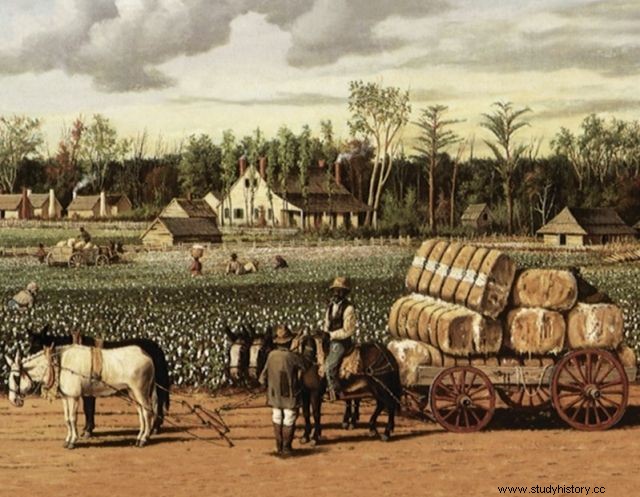
An idyll in the South? For whites only!
Negroes believe in promises to regain freedom. The Spaniards gave them to them in connection with the war they started in the colonies with Great Britain (the so-called war for Jenkins' ear).
The forces of black rebels feed on blood. Their ranks grow with each slave-owning white slave family and each burnt plantation. However, the uprising does not last long - the rebels are surrounded.
Some manage to escape, the rest are cut into the trunk. The whites put their heads on stakes, and they set them along the roads as a warning. Rebellion casualties:20 white and 44 slaves.
United States… slaves?
The revolt sows the seeds of anxiety among growers. These are turbulent times. The political situation on the continent is radically changing, the United States is born, and the advocates of democracy come to power. For Negroes, however, there is no freedom.
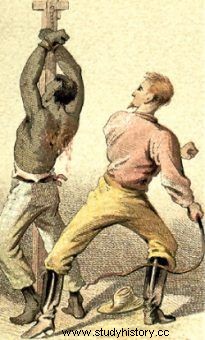
Ruthlessness. The basic character trait of white growers.
The planters' fear intensified after the successful slave uprising in Santo Domingo and the last-minute foiled Gabriel Prosser uprising in Virginia in 1800.
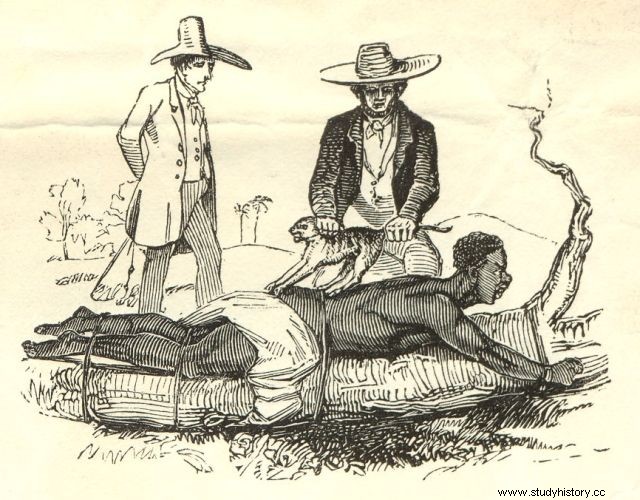
Planters used whatever means were available to oppress the slaves. Even cats.
The states in the north are finally abolishing slavery, but the situation for black people in the south is only getting worse. They lose all their rights, and the whites base their entire economy on exploitation. Slaves from Georgia, Mississippi and South Carolina pay the price for the fact that blacks can finally breathe a sigh of relief in New York or Philadelphia.
The growers can no longer import new slaves, so they force Ebony to give birth to babies for the races. Almost as if they were machines for the production of forced laborers.
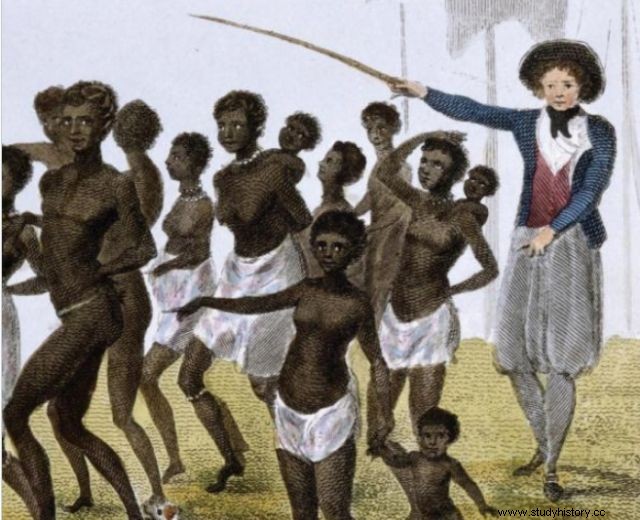
Slaves were supposed to produce children. For races.
The Negro Bastille
We don't have to wait long for the next revolts. In 1822, a conspiracy is formed under the leadership of Denmark Vasey - a free Negro who was born a slave and bought his freedom by winning the lottery.
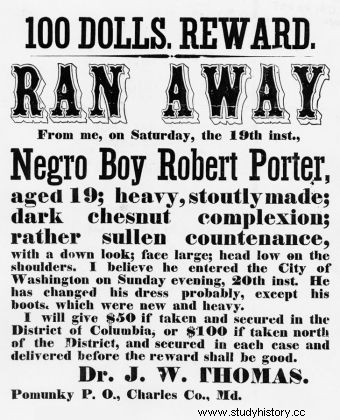
The nigga got away! An announcement about a runaway slave.
6,000 slaves are involved in the conspiracy. The conspirators plan to liberate Charlston on July 14th. Exactly on the anniversary of the fall of the Bastille.
The plan goes to the head because two initiated slaves are cheating. 131 men are arrested, 35 - including Vasey - hanged.
God had the whites killed
Complete panic is already breaking out among the whites. 9 years later, this fear is exploited by Nat Turner - a slave, who was entrusted with the mission of killing the growers by God himself:
I heard a loud sound in heaven and the Holy Spirit appeared before me and said that the Serpent was free, Christ laid aside his yoke with which he came into the world for human sins and that now I am to take them up and fight the Serpent, for the time is soon approaching when the first will be last and the last will be first.
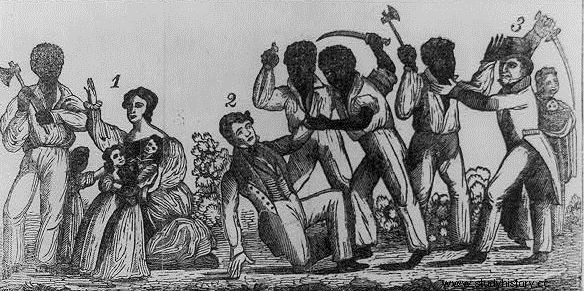
Nat Turner's Rebellion in Period Illustration.
The uprising breaks out on August 21, 1831 in Southampton County, Virginia. Rebels wander from plantation to plantation, freeing slaves and killing all whites, regardless of age or gender, with simple tools.
Black despair of the White?
55-65 people are killed , making Turner's riot the largest and most successful uprising in the history of the southern states.
The rebellion was suppressed, of course, and Turner himself hanged. After his death, his body was flayed, decapitated and dismembered. The following months bring more bloody scores - about 200 innocent slaves are killed .
While none of these uprisings are successful, the deaths of heroes such as Turner and Vasey were not in vain. In total, there have been about 250 uprisings in the history of American slavery. It's time to put the thesis about the passivity of black slaves into fairy tales.
